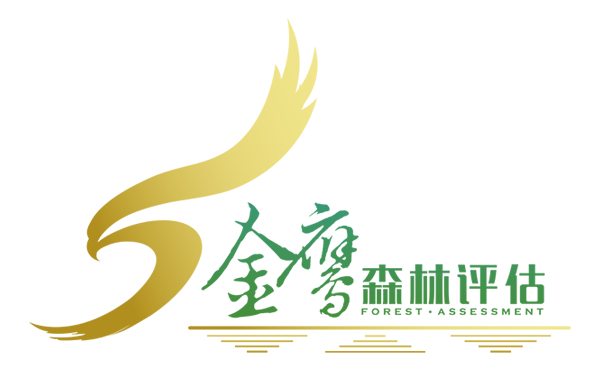发布:2025-11-10 浏览:0
森林资源资产价格鉴证评估技术规范(中价协【2020】41号 )
Technical Specification for Forest Resource Asset Price Appraisal and Evaluation (Zhongjia Xie [2020] No. 41)
第一章 总 则
Chapter 1 General Provisions
第一条
Article 1
为规范森林资源资产价格鉴证评估行为,统一森林资源资产价格鉴证评估程序和方法,保护森林资源资产当事人合法权益和公共利益,根据《中华人民共和国价格法》、《中华人民共和国资产评估法》、《中华人民共和国森林法》和中国价格协会《价格鉴证评估执业规范》等制定本技术规范。
In order to standardize the behavior of forest resource asset price appraisal and evaluation, unify the procedures and methods of forest resource asset price appraisal and evaluation, protect the legitimate rights and interests of forest resource asset parties and public interests, this technical specification is formulated in accordance with the Price Law of the People's Republic of China, the Asset Appraisal Law of the People's Republic of China, the Forest Law of the People's Republic of China, and the Practice Standards for Price Appraisal and Evaluation of the China Price Association.
第二条
Article 2
本规范适用于价格鉴证评估机构及其价格鉴证评估专业人员执行森林资源资产价格鉴证评估业务。
This standard is applicable to price appraisal and evaluation agencies and their professional personnel who carry out forest resource asset price appraisal and evaluation services.
第三条
Article 3
本规范所称森林资源资产,是指由特定主体拥有或者控制并能带来经济利益的,用于生产、提供商品和生态服务的森林资源,包括森林、林木、林地、森林景观、森林生态等。
The forest resource assets referred to in this regulation refer to forest resources owned or controlled by specific entities that can bring economic benefits and are used for the production and provision of goods and ecological services, including forests, trees, forests, forest landscapes, forest ecology, etc.
第四条 本规范所称森林资源资产价格鉴证评估,是指价格鉴证评估机构及其价格鉴证评估专业人员根据委托,按照规定的标准和程序,运用科学的方法对森林资源资产价格进行评定、估算,并出具价格鉴证评估报告的专业服务行为。价格鉴定业务出具价格鉴定意见书,价格评估业务出具价格评估报告。价格鉴定意见书和价格评估报告统称为价格鉴证评估报告。
Article 4: The forest resource asset price appraisal and evaluation referred to in these regulations refers to the professional service behavior of price appraisal and evaluation institutions and their price appraisal and evaluation professionals, who, according to the prescribed standards and procedures, use scientific methods to evaluate and estimate the price of forest resource assets based on commission, and issue a price appraisal and evaluation report. The price appraisal business issues a price appraisal opinion, and the price evaluation business issues a price evaluation report. The price appraisal opinion and price evaluation report are collectively referred to as the price appraisal evaluation report.
第二章 森林资源资产价格鉴证评估基本程序与所需资料
Chapter 2 Basic Procedures and Required Materials for Forest Resource Asset Price Appraisal and Evaluation
第五条
Article 5
森林资源资产价格鉴证评估基本程序1.取得委托人出具的价格鉴证评估委托书;2.明确价格鉴证评估基本事项,签订委托合同;3.指派价格鉴证评估专业人员;4.确定价格鉴证评估作业方案;5.实地勘验,进行资产核查,确定价格鉴证评估范围,核查价格鉴证评估标的真实性与客观状态,提出核查报告。6.收集与整理价格鉴证评估资料;7.市场调查;8.选定价格鉴证评估方法;9.测算、分析、确定价格鉴证评估结论;10.撰写价格鉴证评估报告;11.审核价格鉴证评估报告;12.提交(送达)价格鉴证评估报告;13.价格鉴证评估报告归档。价格鉴证评估机构及其价格鉴证评估专业人员可以根据鉴证评估业务的具体情况及重要性原则,合理确定各基本程序的繁简程度,但不得随意删减价格鉴证评估基本程序。
Basic procedures for price appraisal and evaluation of forest resource assets: 1. Obtain a price appraisal and evaluation commission letter issued by the client; 2. Clarify the basic matters of price appraisal and evaluation, and sign a commission contract; 3. Assign professional personnel for price appraisal and evaluation; 4. Determine the price appraisal and evaluation work plan; 5. Conduct on-site inspection, conduct asset verification, determine the scope of price appraisal and evaluation, verify the authenticity and objective status of the price appraisal and evaluation subject, and submit a verification report. 6. Collect and organize price appraisal and evaluation materials; 7. Market research; 8. Select a price appraisal method; 9. Calculate, analyze, and determine the price appraisal conclusion; 10. Write a price appraisal report; 11. Review the price appraisal report; 12. Submit (deliver) the price appraisal report; 13. Archive the price appraisal report. Price appraisal and evaluation agencies and their professional personnel may reasonably determine the complexity of each basic procedure based on the specific situation and importance principles of the appraisal and evaluation business, but shall not arbitrarily delete the basic procedures of price appraisal and evaluation.
第六条
Article 6
森林资源资产价格鉴证评估委托应当提供书面委托书、有效的森林资源资产清单和其他有关材料。价格鉴证评估专业人员在进行森林资源资产价格评定估算前,可以委托相关专业机构对委托人或其他相关当事人提供的森林资源资产实物量清单进行现场核查,由核查机构出具核查报告。当森林资源资产实物量清单由相关专业机构为满足所进行的价格鉴证评估需求,通过开展调查工作,以出具报告方式确定时,价格鉴证评估人员可以对调查工作进行现场核查,核查符合要求后方可进行价格鉴证评估。
The commission for price appraisal and evaluation of forest resource assets shall provide a written power of attorney, a valid list of forest resource assets, and other relevant materials. Before conducting the estimation of forest resource asset prices, price appraisal and evaluation professionals may entrust relevant professional institutions to conduct on-site verification of the physical inventory of forest resource assets provided by the client or other relevant parties, and the verification institution shall issue a verification report. When the physical inventory list of forest resource assets is determined by relevant professional institutions through investigation and report issuance to meet the needs of price appraisal and evaluation, price appraisal and evaluation personnel can conduct on-site verification of the investigation work. Only after verifying that it meets the requirements can price appraisal and evaluation be carried out.
第七条
Article 7
有效的森林资源资产清单:指以具有相应级别调查设计资格证书的森林资源调查规划设计单位基准日或距基准日相近的调查资料,并经上级林业主管部门批准使用的森林资源规划设计调查(二类调查)、作业设计调查(三类调查)成果,或按林业资源管理部门要求建立并逐年更新,且经补充调查修正的森林资源档案资料编制,并由林业主管部门认定的森林资源清单。森林资源清单以小班为单位编制。
An effective forest resource asset inventory refers to a forest resource inventory that is based on survey data from forest resource survey, planning, and design units with corresponding levels of survey and design qualifications on or near the reference date, and is approved for use by higher-level forestry authorities based on the results of forest resource planning and design surveys (Class II surveys) and operational design surveys (Class III surveys), or established and updated annually according to the requirements of forestry resource management departments, supplemented and revised by supplementary surveys, and recognized by forestry authorities. The forest resource inventory is compiled in small groups.
第八条 其他有关资料
Article 8 Other Relevant Information
一、林权证书或能证明森林资源资产权属的其他法律文书。二、林业基本图、林相图、作业设计方案及相关图表。三、作业设计每木检尺记录。四、有特殊经济价值的林木种类、数量和质量及分布情况的材料。五、当地森林培育、森林采伐和基本建设等方面的技术经济指标。六、林木培育的账面历史成本资料。七、有关的小班调查薄及相关资料复印件。八、按照价格鉴证评估目的必须提交的其他材料,如森林景观图片及森林旅游业主要指标资料等。
1、 Forest ownership certificate or other legal documents that can prove the ownership of forest resource assets. 2、 Forestry basic map, forest phase map, homework design plan and related charts. 3、 Record each wooden ruler for homework design. 4、 Materials on the types, quantity, quality, and distribution of trees with special economic value. 5、 Technical and economic indicators for local forest cultivation, forest logging, and infrastructure construction. 6、 Historical cost data of forest cultivation on paper. 7、 Copy of the relevant small class survey booklet and related materials. 8、 Other materials that must be submitted for the purpose of price appraisal evaluation, such as forest landscape images and main indicators of forest tourism industry.
第九条 价格
Article 9 Price
鉴证评估专业人员应履行价格鉴证评估程序,分析核实森林资源资产实物量及相关信息,选择恰当的评估参数进行评定、估算,编制提交价格鉴证评估报告。
Certification and evaluation professionals should perform the price certification and evaluation procedures, analyze and verify the physical quantity and related information of forest resource assets, select appropriate evaluation parameters for assessment and estimation, and prepare and submit a price certification and evaluation report.
第三章 森林资源资产核查
Chapter 3 Verification of Forest Resource Assets
第十条 价格
Article 10 Price
鉴证评估机构受理委托后,按照本规范第六条第二款应当对价格鉴证评估标的进行实地勘验,核查评估标的实际情况,对照委托书填写的内容、委托人提交的资产清单和相关资料进行认真查验,对核查符合要求的方可进行价格鉴证评估。对于委托人提供的资料要求账面、图面、实地三者一致。与实地勘验不符的或资料不全的,要求委托方继续提供,直至符合要求为止。
After accepting the commission, the appraisal agency shall conduct on-site inspection of the price appraisal subject matter in accordance with Article 6, paragraph 2 of this Regulation, verify the actual situation of the appraisal subject matter, carefully check the contents filled in the power of attorney, the asset list submitted by the client, and relevant materials, and only conduct price appraisal and evaluation if the verification meets the requirements. For the information provided by the client, it is required that the books, drawings, and on-site materials be consistent. If there is any discrepancy with the on-site inspection or incomplete information, the client is required to continue providing it until it meets the requirements.
第十一条森林资源资产的核查项目、相关要求及核查报告
Article 11 Verification items, relevant requirements, and verification reports for forest resource assets
一、核查具体项目1.林地:所有权、经营权、地类、面积、立地质量等级、地利等级及林地经营类型等。2.林木按照林种相应的核查项目外,还要增加与评估目的有关的项目划分林分类型。3.未成林造林地上的幼树:权属、树种组成、年龄或苗龄、造林时间、平均树高、造林成活率、造林保存率;二、资料搜集在进行评定估算前,价格鉴证评估机构必须搜集掌握当地有关的技术经济指标资料,主要有:1.营林生产技术标准、定额及有关成本费用资料;2.木材生产、销售等定额及有关成本费用资料;3.价格鉴证评估基准日各种规格的木材、林副产品市场价格,以及销售过程中的税、费征收标准;4.当地及邻近地区的林地使用权出让、转让和出租的价格资料;5.当地及邻近地区的林业生产投资收益率;6.各树种的生长过程表、标准表、生长预测等资料;7.有关立木材积表、原木材积表、材种出材率表、立地指数表等经营数表及测树资料。三、其他有关的资料1.林业用地面积统计表;2.森林资源统计表(林木蓄积统计表);3.森林特产调查统计表;4.森林调查薄、林相图、森林分布图;5.森林防火区划图等。四、森林资源资产的核查方法分为抽样控制法、小班抽查法和全面核查法,价格鉴证评估机构可按照不同的评估目的、评估种类、具体评估对象的特点和委托人的要求选择使用。1.抽样控制法是以评估对象为抽样总体,以95%的可靠性,分设一定数量的样地进行实地调查,要求总体蓄积量抽样精度达到90%以上。(1)样方的布设,据样方布设草图及各样方之间的距离,在现地设置样方,样方的大小视被评估对象的规格与类型确定。(2)样方内测树或评估客体的实测,在事先设计好的实测记录表上,记录实测数据。(3)选取有代表性的样方,实施GPS定位,如果没有GPS定位则要记载距离明显标志物的距离。2.现场核查时拍摄必要的照片,展示评估对象的形象。五、样地实测的注意事项1.参与实测的人员应签名;2.大型项目的样地实测应当有资产占有方或委托方的人员在场,并以见证人的资格签名;3.注意实测项目与评估对象相吻合,不要漏项。
1、 Verify specific project 1: Forest land: ownership, management rights, land type, area, site quality grade, land use grade, and forest land management type. 2. In addition to the corresponding verification items for forest species, forest types should also be classified based on assessment purposes. 3. Young trees on undeveloped forest land: ownership, tree species composition, age or seedling age, afforestation time, average tree height, afforestation survival rate, afforestation preservation rate; 2、 Before conducting evaluation and estimation, the price appraisal agency must collect and master relevant technical and economic indicators of the local area, mainly including: 1. Technical standards, quotas, and related cost and expense information for forest production; 2. Quotas for wood production, sales, and related cost information; 3. Market prices of various specifications of timber and forest by-products on the benchmark date for price appraisal, as well as tax and fee collection standards during the sales process; 4. Price information for the transfer, assignment, and rental of forest land use rights in the local and adjacent areas; 5. The return on investment of forestry production in the local and neighboring areas; 6. Data on the growth process table, standard table, and growth prediction of various tree species; 7. Management data tables and tree measurement data related to standing timber volume table, log volume table, timber yield table, site index table, etc. 3、 Other relevant information: 1. Statistical table of forestry land area; 2. Forest Resource Statistics Table (Forest Volume Statistics Table); 3. Forest specialty survey and statistics table; 4. Forest survey book, forest phase map, forest distribution map; 5. Forest fire prevention zoning map, etc. 4、 The verification methods for forest resource assets are divided into sampling control method, small group sampling method, and comprehensive verification method. Price appraisal and evaluation institutions can choose to use them according to different evaluation purposes, types, specific characteristics of evaluation objects, and the requirements of the client. 1. Sampling control method is to use the evaluation object as the sampling population, with a reliability of 95%, and set up a certain number of sample plots for field investigation, requiring the sampling accuracy of the overall accumulation to reach 90% or more. (1) The layout of the sample plot is based on the sketch of the plot layout and the distance between each sample plot, and the sample plot is set up locally. The size of the sample plot is determined by the specifications and types of the evaluated object. (2) The actual measurement of trees or evaluation objects within the sample plot shall be recorded on a pre designed measurement record form, and the measured data shall be recorded. (3) Select representative sample plots and implement GPS positioning. If GPS positioning is not available, the distance to obvious landmarks should be recorded. 2. Take necessary photos during on-site inspection to showcase the image of the evaluated object. 5、 Precautions for sample site testing: 1. Personnel participating in the testing should sign; 2. The on-site testing of large-scale projects should have personnel from the asset owner or client present and sign as witnesses; 3. Pay attention to the consistency between the measured items and the evaluated objects, and do not miss any items.
第十二条森林资源资产的核查报告
Article 12 Verification Report on Forest Resource Assets
一、概况:说明被核查资产所在地点、资产类型、资产概况的描述;资产占有人情况;委托方提交的资产清单简况;核查机构、核查人员组成情况等。二、核查依据:叙述采用的标准和各种数表。三、核查目的:与评估目的相一致、协调。四、核查方法:叙述核查采用的技术方法、抽查对象抽取方法和各因子调查方法等(如目测、实测、抽样比重、测量记录的主要指标等)。五、核查结论:依据被核查资产的类型、分门别类列出资产清单及主要指标;分析评价委托方提交的清单的合格率、核查精度和误差;确定委托方提交的清单的可信程度,确定该清单是否可作为价格评估的基础数据。六、参加核查人员及见证人名单,核查机构和人员签章。七、附表,包括核查记录表、小班一览表、各种森林资产实物量统计表。
1、 Overview: A description of the location, type, and overview of the assets being verified; The situation of asset owners; Brief overview of the asset inventory submitted by the client; The composition of verification agencies and personnel. 2、 Verification basis: Describe the standards and various numerical tables used. 3、 Verification purpose: Consistent and coordinated with the evaluation purpose. 4、 Verification method: Describe the technical methods used for verification, the methods for selecting random inspection objects, and the methods for investigating various factors (such as visual inspection, actual measurement, sampling proportion, main indicators of measurement records, etc.). 5、 Verification conclusion: List the assets and their main indicators based on the type and classification of the assets being verified; Analyze and evaluate the qualification rate, verification accuracy, and errors of the list submitted by the commissioning party; Determine the credibility of the list submitted by the client and determine whether the list can serve as the basis data for price evaluation. 6、 List of personnel and witnesses participating in the verification, with signatures from the verification agency and personnel. 7、 Appendix, including verification record table, small class list, and various forest asset physical quantity statistics table.
第四章 森林资源资产价格鉴证评估的主要方法
Chapter 4: Main Methods for Appraisal and Evaluation of Forest Resource Asset Prices
第十三条森林资源资产价格鉴证评估
Article 13: Valuation and Appraisal of Forest Resource Asset Prices
以总体、森林类型或小班为单位进行评定估算,主要方法有市场法、收益法和成本法三种基本方法。森林资源资产价格鉴证评估应根据不同评估方法的适用条件、评估对象、评估目的,经比较论证后选用两种以上方法进行评定估算,综合确定评估标的价格。如果只能采用一种评估方法,须说明理由。第十四条森林、林木一、市场法:是以被评估森林资源资产基准日市场价或相同、类似森林资源资产基准日市场价为基础,评定估算被评估森林资源资产价格的一种方法。包括市场价倒算法、市场成交价比较法。1.市场价倒算法:是用被评估林木采伐后取得木材的市场销售总收入,扣除木材经营所消耗的成本(含有关税费)及应得的利润后,剩余的部分作为林木评估价格。其计算公式为:式中:P——价格评估值;W——销售总收入;C——木材生产经营成本(包括采运成本、销售费用、管理费用、财务费用及有关税费);F——木材生产经营合理利润。2.市场成交价比较法:是将相同或类似的森林资源资产的现行市场成交价格作为比较基础,估算拟评估森林资源资产价格的方法。对同一评估对象应选取三个以上参照交易案例,并从评估资料、评估参数指标等的代表性、适宜性、准确性方面,客观分析参照交易案例,对各估算结果进行分析判断后,可采用简单算术平均法、加权算术平均法、中位数法、众数法、综合分析法等方法确定评估结果,并在评估报告中披露所采用的方法和理由。其中简单算术平均法计算公式为:式中:P——价格评估值;X——拟评估森林资产的实物量;Ki——第i个参照交易案例林分质量综合调整系数(见附录1);Kbi——第i个参照交易案例物价调整系数;Gi——第i个参照交易案例市场交易价格;N——参照交易案例个数。二、收益法:包括收益现值法、收获现值法、年金资本化法。1.收益现值法:是通过估算被评估森林资源资产在未来经营期内隔年的预期收益按一定的折现率(投资收益率)折算为现值,并累计求和得出被评估森林资源资产价格的方法。其计算公式为:式中:P——价格评估值;Ai——第i年的年净收益;U——经营周期;R——投资收益率;N——林分年龄。2.收获现值法:是利用收获表预测被评估林木资产在主伐时净收益的折现值,扣除评估基准日后到主伐期间所支出的营林生产成本折现值的差额,作为被评估林木资产价格的方法。其计算公式为:式中:P——价格评估值;K——林分质量综合调整系数(见附录1);Au——参照林分u年主伐时的净收益;Aa、Ab——参照林分第a、b年的间伐和其它纯收益(n>a,b时,Aa、Ab=0);u——经营周期;n——林分年龄;Ci——评估后到主伐期间的年营林生产成本;r——投资收益率。在林业生产实践中,间伐的成本在间伐净收益计算时扣除了,这阶段的营林成本主要是按面积分摊的年森林管护成本(V),其计算公式可简化为:3.年金资本化法:是将被评估森林资源资产每年的稳定收益作为资本投资的收益,再按恰当的投资收益率求出资产的价格。使用该方法以实现森林资源永续利用为前提条件,其计算公式为:式中:P——价格评估值;A——年平均纯收益;R——投资收益率。三、成本法:是以被评估森林资源资产的重置成本为基础评定估算其价格的方法。包括重置成本法、历史成本调整法。1.重置成本法:是按现时的工价及生产水平重新营造一块与被评估森林资源资产相类似的森林资源资产所需的成本费用,作为被评估森林资源资产的价格。其计算公式为:式中:P——价格评估值;K——林分质量综合调整系数(见附录1);Ci——第i年以现时工价及生产水平为标准的生产成本;N——林分年龄;R——投资收益率。2.历史成本调整法:是以投入时的成本为基础,根据投入时与价格鉴证评估基准日的物价指数变化情况确定被评估林木价格为方法。其计算公式为:式中:P——价格评估值;K——林分质量综合调整系数(见附录1);Ci——第i年投入的实际成本;B——价格评估基准日物价指数;Bi——投入时的物价指数;R——利率;N——林分年龄。
There are three basic methods for evaluating and estimating based on population, forest type, or small group, including market method, income method, and cost method. The appraisal and evaluation of forest resource asset prices should be based on the applicable conditions, evaluation objects, and evaluation purposes of different evaluation methods. After comparison and demonstration, two or more methods should be selected for evaluation and estimation, and the price of the evaluation target should be comprehensively determined. If only one evaluation method can be used, the reasons must be explained. Article 14 Forests and Trees 1. Market Law: It is a method of evaluating and estimating the price of the evaluated forest resource assets based on the market price on the benchmark date of the evaluated forest resource assets or the market price on the benchmark date of the same or similar forest resource assets. Including market price inversion algorithm and market transaction price comparison method. 1. Market price inversion algorithm: It is to use the total market sales revenue of timber obtained after the evaluated timber is harvested, deduct the cost of timber operation (including relevant taxes and fees) and the profit due, and use the remaining part as the timber evaluation price. The calculation formula is: where P - price evaluation value; W - Total sales revenue; C - Wood production and operation costs (including transportation costs, sales expenses, management expenses, financial expenses, and related taxes and fees); F - Reasonable profit from wood production and operation. 2. Market transaction price comparison method: It is a method of estimating the price of forest resource assets to be evaluated based on the current market transaction prices of the same or similar forest resource assets. Three or more reference transaction cases should be selected for the same evaluation object, and objective analysis should be conducted on the representativeness, suitability, and accuracy of the evaluation data, evaluation parameters, and indicators. After analyzing and judging the estimation results, methods such as simple arithmetic mean, weighted arithmetic mean, median, mode, and comprehensive analysis can be used to determine the evaluation results, and the methods and reasons used should be disclosed in the evaluation report. The formula for calculating the simple arithmetic mean is: where P represents the price evaluation value; X - The physical quantity of forest assets to be evaluated; Ki - Comprehensive adjustment coefficient for forest stand quality in the i-th reference transaction case (see Appendix 1); Kbi - Price adjustment coefficient for the i-th reference transaction case; Gi - the market transaction price of the i-th reference transaction case; N - Number of reference transaction cases. 2、 Income approach: including present value of income approach, present value of earnings approach, and annuity capitalization approach. 1. Present value of income method: It is a method of estimating the expected income of the evaluated forest resource asset in the next year of future operation, converting it into present value at a certain discount rate (investment return rate), and cumulatively summing it up to obtain the price of the evaluated forest resource asset. The calculation formula is: where P - price evaluation value; Ai - Annual net income for the i-th year; U - Business cycle; R - Investment return rate; N - Forest stand age. 2. The present value of harvest method: It is a method of using a harvest table to predict the discounted value of the net income of the evaluated forest assets during the main cutting period, deducting the difference between the discounted value of the forest production costs incurred from the evaluation reference date to the main cutting period, as the price of the evaluated forest assets. The calculation formula is: where P - price evaluation value; K - Comprehensive adjustment coefficient for forest stand quality (see Appendix 1); Au - refers to the net income of the forest stand during the main cutting in year u; Aa, Ab - Referring to the thinning and other net income of the forest in the a and b years (when n>a, b, Aa、Ab=0); U - Business cycle; N - stand age; Ci - Annual forest production cost from evaluation to main logging period; R - Investment return rate. In forestry production practice, the cost of thinning is deducted in the calculation of net income from thinning. The cost of forest management in this stage is mainly the annual forest management cost (V) allocated by area, and its calculation formula can be simplified as: 3. Annuity capitalization method: It takes the stable annual income of the evaluated forest resource assets as the capital investment income, and then calculates the asset price according to the appropriate investment return rate. The use of this method is based on the premise of achieving sustainable utilization of forest resources, and its calculation formula is: where P - price evaluation value; A - Annual average net income; R - Investment return rate. 3、 Cost method: It is a method of evaluating and estimating the price of evaluated forest resource assets based on their replacement cost. Including reset cost method and historical cost adjustment method. 1. Reset cost method: It is the cost and expense required to recreate a forest resource asset similar to the evaluated forest resource asset based on the current labor price and production level, as the price of the evaluated forest resource asset. The calculation formula is: where P - price evaluation value; K - Comprehensive adjustment coefficient for forest stand quality (see Appendix 1); Ci - Production cost in the i-th year based on current labor prices and production levels; N - stand age; R - Investment return rate. 2. Historical cost adjustment method: It is based on the cost at the time of input, and determines the price of the evaluated forest based on the changes in the price index between the time of input and the price appraisal benchmark date. The calculation formula is: where P - price evaluation value; K - Comprehensive adjustment coefficient for forest stand quality (see Appendix 1); Ci - actual cost invested in the i-th year; B - Price index on the benchmark date for price evaluation; Bi - Price index at the time of input; R - interest rate; N - Forest stand age.
第十五条竹林
Article 15 Bamboo Grove
一、新造竹林资产价格鉴证评估宜采用重置成本法,也可使用市场成交价比较法。重置成本法见公式(7),市场成交价比较法见公式(2)。二、已投产竹林资产价格鉴证评估,宜采用收益现值法。1.结构不合理的花年竹林花年竹林即大小年不明显的竹林,花年竹林收益现值法是将收益值分为调整期和稳产期两段进行计算。调整期应根据竹林的现有年龄结构确定,但调整期最长不应超过6年。花年竹林永续经营条件下的收益现值法计算公式如下:式中:P——价格评估值;M——调整期的年数;Ai——调整期内第i年的净收益;AI——进入稳定期时的年净收益;R——投资收益率。花年竹林有限年期的收益现值法计算公式如下:式中:N——有限年期。2.结构不合理的大小年竹林评估大小年明显的竹林,可将其看成两个以2年为周期进行永续经营的总体,并将其收益现值相加,再加上调整期内的收益现值。其计算公式为:式中:P——价格评估值;M——调整期的年数;Ai——调整期内第i年的净收益;AI1——进入稳定期后大年的年净收益;AI2——进入稳定期后小年的年净收益;r——投资收益率。当竹林经营为有限年期时公式如下:式中:N——有限年期。3.结构合理的花年竹林花年竹林的竹材、竹笋产量稳定,投入也稳定,其价格鉴证评估可直接用年金资本化法,年金资本化法见公式(6)。当竹林经营为有限年期时公式如下:式中:N——有限年期。4.结构合理的大小年竹林大小年竹林的收入已达稳定,但大小年的收入差异明显。因此,可看作2年为周期的两个总体的年金相加(永续经营)。其计算公式为:式中:P——价格评估值;AI1——进入稳定期后大年的年净收益;AI2——进入稳定期后小年的年净收益;r——投资收益率。当竹林经营为有限年期时公式如下:式中:N——有限年期。
1、 The valuation of newly constructed bamboo forest assets should adopt the reset cost method or the market transaction price comparison method. The reset cost method is shown in formula (7), and the market transaction price comparison method is shown in formula (2). 2、 The appraisal of the price of bamboo forest assets that have been put into operation should adopt the present value of earnings method. 1. The flower year bamboo forest with an unreasonable structure refers to bamboo forests with unclear size and year. The present value of income method for flower year bamboo forests divides the income value into two stages: adjustment period and stable production period for calculation. The adjustment period should be determined based on the existing age structure of the bamboo forest, but the longest adjustment period should not exceed 6 years. The formula for calculating the present value of income under the condition of sustainable management of bamboo forests in the Year of Flower is as follows: where P represents the price evaluation value; M - the number of years in the adjustment period; Ai - Net income in the i-th year of the adjustment period; AI - Annual net income when entering a stable period; R - Investment return rate. The formula for calculating the present value of income for a finite period of bamboo forest in Hua Nian is as follows: N - finite period. 2. Evaluation of bamboo forests with unreasonable structure. Bamboo forests with obvious size and year can be regarded as two populations that operate sustainably with a 2-year cycle, and their present value of income can be added together, plus the present value of income during the adjustment period. The calculation formula is: where P - price evaluation value; M - the number of years in the adjustment period; Ai - Net income in the i-th year of the adjustment period; AI1- Annual net income after entering the stable period; AI2- Annual net income for a few years after entering the stable period; R - Investment return rate. When bamboo forest management is for a limited period of time, the formula is as follows: N - Limited period. 3. A well structured bamboo forest with stable bamboo and shoot production and investment can be directly evaluated using the annuity capitalization method, as shown in formula (6). When bamboo forest management is for a limited period of time, the formula is as follows: N - Limited period. 4. The income of bamboo forests with reasonable structure has reached a stable level, but there is a significant difference in income between different years. Therefore, it can be regarded as the sum of two populations' annuities with a 2-year cycle (perpetual operation). The calculation formula is: where P - price evaluation value; AI1- Annual net income after entering the stable period; AI2- Annual net income for a few years after entering the stable period; R - Investment return rate. When bamboo forest management is for a limited period of time, the formula is as follows: N - Limited period.
第十六条经济林
Article 16: Economic Forests
一、产前期经济林资产价格鉴证评估产前期经济林资产价格鉴证评估宜选用重置成本法,在经济林交易市场公开、活跃、发育完善的条件下,也可使用市场成交价比较法。重置成本法见公式(7),市场成交价比较法见公式(2)。二、初产期经济林资产价格鉴证评估1.收益现值法初产期阶段采用收益现值法应明确该品种经济林的经济寿命,拟评估经济林初产期和盛产期的平均产量,并分段计算。其计算公式为:式中:P——价格评估值;AI——盛产期平均年净收益;AJ——经济寿命末经济林木材的净收益;Ai——初产期各年的净收益;U——经济寿命期;N——林分的年龄;n1——盛产期的开始年;K——林分质量综合调整系数(见附录1);r—投资收益率。2.市场成交价比较法,见式(2)。三、盛产期经济林资产价格鉴证评估1.收益现值法盛产期是经济林资产获取收益的阶段,这一阶段产品产量高、收益多且相对稳定。其计算公式为:式中:P一价格评估值;AI—盛产期内年净收益;K一林分质量综合调整系数(见附录1);u一经济寿命期;n一林分的年龄;r—投资收益率。2.市场成交价比较法,见公式(2)。四、衰产期经济林资产价格鉴证评估衰产期经济林的产量明显下降,一年不如一年,继续经营将是高成本低收益,甚至出现亏损,因此,应及时采伐更新。这个阶段的经济林资产可用剩余价格法进行评估。特别是乔木树种的经济林中,其剩余价值主要是林木的价值。
1、 Pre production economic forest asset price appraisal and evaluation should use the reset cost method. Under the conditions of open, active, and well-developed economic forest trading market, the market transaction price comparison method can also be used. The reset cost method is shown in formula (7), and the market transaction price comparison method is shown in formula (2). 2、 Appraisal and Evaluation of Economic Forest Asset Prices during the Initial Production Stage 1. The present value of income method should be used during the initial production stage to determine the economic lifespan of the economic forest variety. The average yield of the economic forest during the initial and peak production stages should be evaluated and calculated in stages. The calculation formula is: where P - price evaluation value; AI - Average annual net income during the peak production period; AJ - Net income of economic forest timber at the end of its economic lifespan; Ai - Net income for each year during the initial production period; U - Economic lifespan; N - age of the forest stand; N1- the starting year of the peak production period; K - Comprehensive adjustment coefficient for forest stand quality (see Appendix 1); R - Investment return rate. 2. Market transaction price comparison method, see equation (2). 3、 Appraisal and evaluation of economic forest asset prices during the peak production period: 1. Present value method of income. The peak production period is the stage when economic forest assets obtain income, during which the product output is high, the income is abundant, and relatively stable. The calculation formula is: where P is the price evaluation value; AI - Annual net income during the peak production period; K - Comprehensive adjustment coefficient for forest stand quality (see Appendix 1); U - Economic lifespan; The age of a forest stand; R - Investment return rate. 2. Market transaction price comparison method, see formula (2). 4、 Appraisal and evaluation of asset prices for economic forests during the decline period: The yield of economic forests during the decline period has significantly decreased year by year, and continuing to operate will result in high costs, low returns, and even losses. Therefore, timely logging and renewal should be carried out. The economic forest assets at this stage can be evaluated using the residual price method. Especially in economic forests of tree species, their residual value is mainly the value of the trees.
第十七条林地
Article 17 Forest Land
一、市场法1.市场成交价比较法:是以具有相同或类似条件的林地的现行市价作为比较基础,评定估算林地价格的方法。评估时应选取三个以上与拟评估的林地条件相似的参照交易案例,并从评估资料、评估参数指标等的代表性、适宜性、准确性方面,客观分析参照交易案例,对各估算结果进行分析判断后,可采用简单算术平均法、加权算术平均法、中位数法、众数法、综合分析法等方法确定评估结果,并在价格鉴证评估报告中披露所采用的方法和理由。其中简单算术平均法计算公式为:式中:P——价格评估值;S——拟评估林地面积;Ki——林地质量调整系数;Kbi——物价指数调整系数;Gi——参照案例的单位面积林地交易价格;N——参照交易案例个数。2.林地期望价法:是以实现森林永续利用为前提,并假定每个轮伐期林地上的收益相同,支出也相同,从无林地造林开始进行计算,将无穷多个轮伐期的净收益全部折为现值累加求和作为拟评估林地资产的价格。其计算公式为:式中:P——林地期望价;Au——林分u年主伐时的净收益;Aa.Ab——分别为一个轮伐期内的第a年、第b年间伐或其他净收益;C——各年度营林直接投资;V——平均营林生产间接费用;U——轮伐期;一投资收益率。有限年期林地期望价法公式:式中:N——林地使用权期限。3.年金资本化法:是以实现森林永续利用为前提,且林地每年有稳定的收益,按恰当的投资收益率求出林地资产价格的方法。见公式(6)。有限年期年金资本化法公式:式中:Pn——林地使用权为n年的价格评估值;A——年平均纯收益;N——林地使用权期限;r——投资收益率。4.林地费用价法:是用取得林地所需要的费用和把林地维持到现在状态所需的费用来确定林地价格的方法,其计算公式为:式中:P——林地价格评估值;CI——林地购置费;Ci——林地购置后第i年的林地改良费;n一林地购置年限;r—投资收益率。
1、 Market method 1. Market transaction price comparison method: It is a method of evaluating and estimating the price of forest land based on the current market price of forest land with the same or similar conditions. When evaluating, three or more reference transaction cases with similar conditions to the forest land to be evaluated should be selected, and the representativeness, suitability, and accuracy of the evaluation data, evaluation parameters, and indicators should be objectively analyzed. After analyzing and judging the estimation results, methods such as simple arithmetic mean, weighted arithmetic mean, median, mode, and comprehensive analysis can be used to determine the evaluation results, and the methods and reasons used should be disclosed in the price appraisal evaluation report. The formula for calculating the simple arithmetic mean is: where P represents the price evaluation value; S - Proposed assessment of forest area; Ki - Forest land quality adjustment coefficient; Kbi - Price Index Adjustment Coefficient; Gi - transaction price of forest land per unit area based on the reference case; N - Number of reference transaction cases. 2. Expected value method for forest land: It is based on the premise of achieving sustainable forest use, assuming that the income and expenditure on forest land are the same during each rotation period. Starting from afforestation without forest land, the calculation is carried out, and the net income of infinite rotation periods is converted into present value and accumulated as the price of the forest land asset to be evaluated. The calculation formula is: where P - expected price of forest land; Au - Net income of the forest stand during the annual main cutting; Aa. Ab - Refers to the net income or other net income earned during the a-th and b-th years of a rotation period, respectively; C - Direct investment in forest management for each year; V - Average indirect cost of forest production; U - Rotation period; Investment return rate. Formula for the Expected Price Method of Forest Land with Limited Term: In the formula, N represents the term of the forest land use right. 3. Annuity capitalization method: It is a method of calculating the asset price of forest land based on the premise of achieving sustainable forest use and stable annual income from forest land, using an appropriate investment return rate. Refer to formula (6). Formula for capitalization method of limited term annuity: In the formula: Pn - the price evaluation value of forest land use rights for n years; A - Annual average net income; N - Term of Forest Land Use Right; R - Investment return rate. 4. Forest land cost price method: It is a method of determining the forest land price based on the cost required to acquire the forest land and the cost required to maintain the forest land in its current state. The calculation formula is: P - Forest land price evaluation value; CI - Forest land purchase cost; Ci - Forest land improvement fee in the i-th year after the purchase of forest land; N - Purchase period of forest land; R - Investment return rate.
第十八条森林景观
Article 18 Forest Landscape
一、市场法1.市场成交价比较法:是以相同或类似森林景观资产的市场价格作为比较基础,评定估算评估对象价格的方法。其计算公式为:式中:P——价格评估值;S——拟评估森林景观资产的有效利用面积;Ki——森林景观质量调整系数;Kbi——旅游消消费水平调整系数;Gi——参照案例的单位有效利用面积的市场价格;N——参照交易案例个数。2.年金资本化法:对市场发育比较成熟,年均收益相对稳定,景观资源开发、建设和管理已日趋完善的森林景观资产的价格鉴证评估宜选择年金资本化法。见公式(6)。二、重置成本法森林景观资产的重置成本包括森林和旅游设备的重置成本。森林景观资产重置成本法的计算公式为:式中:P——价格评估值;K——森林景观质量调整系数;Ci——第i年的营林投入;CI——旅游设施价格评估值;n——林龄;r——投资收益率。第五章森林资源资产价格鉴证评估基本要求
1、 Market method 1. Market transaction price comparison method: It is a method of evaluating and estimating the price of the evaluated object based on the market price of the same or similar forest landscape assets. The calculation formula is: where P - price evaluation value; S - The effective utilization area of forest landscape assets to be evaluated; Ki - forest landscape quality adjustment coefficient; Kbi - Adjustment coefficient for tourism consumption level; Gi - the market price of the effective utilization area per unit based on the reference case; N - Number of reference transaction cases. 2. Annuity capitalization method: For the price appraisal and evaluation of forest landscape assets with mature market development, relatively stable annual returns, and increasingly perfect landscape resource development, construction, and management, the annuity capitalization method should be selected. Refer to formula (6). 2、 The reset cost method for forest landscape assets includes the reset cost of forests and tourism equipment. The calculation formula for the forest landscape asset reset cost method is: where P - price evaluation value; K - Forest landscape quality adjustment coefficient; Ci - Forest investment in the i-th year; CI - Evaluation Value of Tourism Facility Prices; N - Lin Ling; R - Investment return rate. Chapter 5 Basic Requirements for Forest Resource Asset Price Appraisal and Evaluation
第十九条执行森林资源资产价格
Article 19: Implementation of Forest Resource Asset Prices
鉴证评估业务,应当具备森林资源资产价格鉴证评估的专业知识和实践经验,能够胜任所执行的森林资源资产价格鉴证评估业务。当执行某项特定业务缺乏相关的专业知识和经验时,应当采取弥补措施,包括聘请林业专业技术人员或者相关专业机构协助工作等。
The authentication and evaluation business should possess professional knowledge and practical experience in forest resource asset price authentication and evaluation, and be capable of performing the forest resource asset price authentication and evaluation business. When there is a lack of relevant professional knowledge and experience in performing a specific business, remedial measures should be taken, including hiring forestry professionals or relevant professional institutions to assist with the work.
第二十条价格鉴证评估专业人员应当在价格鉴证评估报告中对森林资源资产的权属状况、自然条件、地理分布、生产经营情况进行恰当描述。对评估范围内具有典型代表性或者经济价值高的森林资源资产,应当进行重点描述。
Article 20: Price appraisal and evaluation professionals shall provide appropriate descriptions of the ownership status, natural conditions, geographical distribution, and production and operation of forest resource assets in the price appraisal and evaluation report. Forest resource assets with typical representativeness or high economic value within the evaluation scope should be described with emphasis.
第二十一条价格鉴证评估专业人员应当在价格鉴证评估报告中披露利用森林资源资产核查报告的情况。
Article 21: Price appraisal and evaluation professionals shall disclose the situation of utilizing forest resource asset verification reports in the price appraisal and evaluation report.
第二十二条价格鉴证评估专业人员应当在价格鉴证评估报告中披露重大事项对评估结论可能产生的影响,包括林地使用费用支付方法的影响、森林资源资产存在的抵押及其他权利受限情形等。
Article 22: Price appraisal professionals shall disclose in the price appraisal report the potential impact of significant issues on the appraisal conclusion, including the influence of payment methods for forest land use fees, the existence of mortgages on forest resource assets, and other restricted rights.
第二十三条采用市场法评估森林资源资产时,应当考虑:1.森林资源资产市场的市场活跃程度,市场提供足够数量可比森林资源资产交易数据的可能性及其可靠性;2.森林资源所在地域的差异性对森林资源资产交易价格的影响;3.森林资源资产的用途和功能对交易价格的影响;4.不同林分质量、立地等级、地利条件、交易情况等因素对森林资源资产价格的影响。
Article 23: When using the market approach to evaluate forest resource assets, consideration should be given to: 1. The market activity level of the forest resource asset market, the possibility and reliability of the market providing a sufficient amount of comparable forest resource asset trading data; 2. The impact of regional differences in the location of forest resources on the trading prices of forest resource assets; 3. The impact of the use and function of forest resource assets on transaction prices; 4. The impact of different forest stand qualities, site grades, geographical conditions, trading conditions, and other factors on the price of forest resource assets.
第二十四条采用收益法评估森林资源资产时,应当考虑:1.森林资源结构、功能、质量、自然生长力等对收益的影响;2.森林资源管理相关法律、行政法规、财政补贴政策、采伐制度等对收益的影响;3.根据森林资源资产的特点、经营类型、风险因素等相关条件合理确定折现率;4.森林资源采伐方式和采伐周期对收益的影响。
Article 24: When using the income method to evaluate forest resource assets, the following factors should be considered: 1. The impact of forest resource structure, function, quality, natural growth capacity, etc. on income; 2. The impact of forest resource management related laws, administrative regulations, financial subsidy policies, logging systems, etc. on revenue; 3. Reasonably determine the discount rate based on the characteristics, management types, risk factors, and other relevant conditions of forest resource assets; 4. The impact of forest resource harvesting methods and harvesting cycles on income.
第二十五条采用成本法评估森林资源资产时,应当考虑:1.森林资源培育过程的复杂性对成本的影响;2.森林资源经营的长期性对价值的影响;3.森林资源质量对价值的影响;4.森林资源培育技术、林地利用方式等造成的影响。
Article 25: When using the cost method to evaluate forest resource assets, consideration should be given to: 1. The impact of the complexity of the forest resource cultivation process on costs; 2. The long-term impact of forest resource management on its value; 3. The impact of forest resource quality on value; 4. The impact of forest resource cultivation techniques and forest land utilization methods.
第六章 附则
Chapter 6 Supplementary Provisions
第二十六条本规范由中国价格协会负责解释。
Article 26: This regulation shall be interpreted by the China Price Association.
第二十七条本规范自发布之日起实施。
Article 27: This standard shall come into effect from the date of its publication.
本文由 森林资源资产评估 友情奉献.更多有关的知识请点击 http://www.jyslpg.com/ 真诚的态度.为您提供为全面的服务.更多有关的知识我们将会陆续向大家奉献.敬请期待.
This article is contributed by the Friendship Contribution of Forest Resource Asset Evaluation For more related knowledge, please click http://www.jyslpg.com/ Sincere attitude To provide you with comprehensive services We will gradually contribute more relevant knowledge to everyone Coming soon.



















